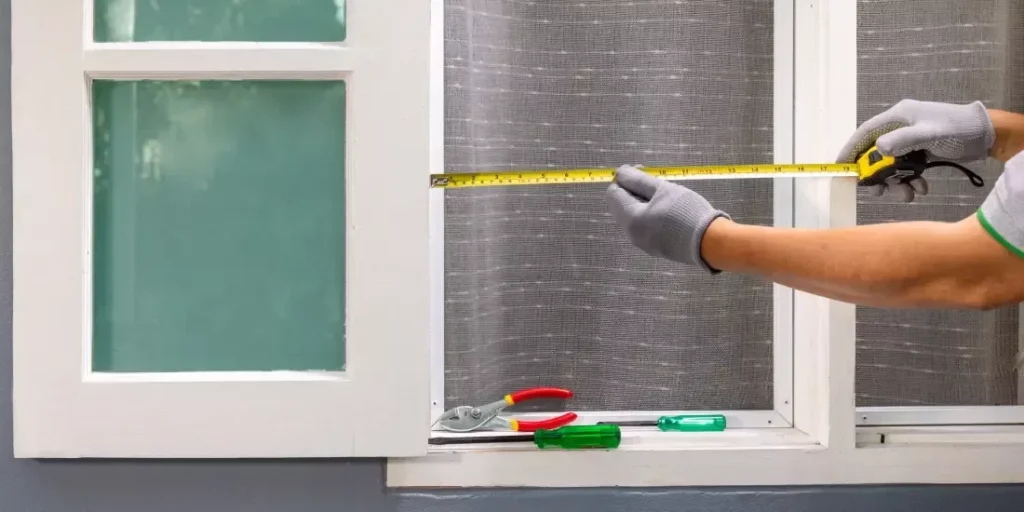In today’s world, the environmental impact of manufacturing processes and materials is a growing concern. As industries strive to adopt more sustainable practices, large aluminium profile stand out for their environmental benefits. One of the key advantages of aluminium is its recyclability. Unlike many materials that lose their properties during recycling, aluminium can be recycled repeatedly without degradation. This makes it a highly sustainable material choice for industries aiming to reduce their environmental footprint.

Aluminium Recycling Process
Aluminium’s recyclability is an essential factor contributing to its sustainability. The recycling process for aluminium is less energy-intensive compared to producing new aluminium from raw bauxite ore. In fact, recycling aluminium saves about 95% of the energy required to create new aluminium, which significantly reduces carbon emissions and energy consumption.
Large aluminium profiles, when no longer needed, can be easily recycled and transformed into new products. This cycle of reusing aluminium reduces the need for mining and processing raw materials, thus decreasing environmental degradation and minimizing waste. As industries increasingly adopt closed-loop systems for their materials, aluminium’s recyclability is a key advantage in reducing waste and conserving natural resources.
Carbon Footprint Reduction
Using aluminium profiles in construction, automotive manufacturing, and other industries can contribute to lowering the carbon footprint of these sectors. Aluminium’s lightweight nature reduces fuel consumption and energy usage in transportation and logistics. Whether it’s in the automotive sector, where lightweight aluminium parts help vehicles become more fuel-efficient, or in construction, where lighter structures require less energy to transport and install, the environmental impact of using aluminium profiles is far lower compared to heavier materials like steel.
Moreover, the durability of aluminium profiles ensures that products have a longer lifespan, reducing the frequency of replacements and minimizing waste. In construction projects, aluminium’s resistance to corrosion means that structures made from large aluminium profiles can withstand harsh weather conditions and continue performing for years, contributing to long-term environmental sustainability.
Innovation and Technological Advancements in Aluminium Profile Manufacturing
The extrusion process used to create large aluminium profiles has evolved significantly over the years. Technological advancements in aluminium manufacturing have led to the development of even more efficient and precise methods of producing large profiles. These innovations not only improve the quality and performance of aluminium products but also enhance the cost-effectiveness of using aluminium in industrial applications.
Precision in Design
Modern manufacturing technologies, such as computer-aided design (CAD) and computer numerical control (CNC) machining, allow for highly precise and customized aluminium profiles. Engineers can now create profiles with exact specifications to meet the unique needs of a project, whether it’s for structural applications, machinery components, or decorative features. These technological advancements ensure that large aluminium profiles are not only functional but also of the highest quality, minimizing the need for rework or adjustments.
Efficiency in Production
Advanced extrusion technologies, coupled with automated processes, have also made the production of large aluminium profiles faster and more efficient. The use of advanced die designs and materials ensures that the profiles are produced with minimal waste, reducing both material and energy consumption. The ability to produce large aluminium profiles in a variety of shapes and sizes has enabled manufacturers to meet the growing demand for customized solutions, allowing them to address the specific needs of different industries.
Energy-Efficient Manufacturing
With the push for sustainability across all sectors, aluminium manufacturers have made significant strides in reducing the energy consumption of their operations. Energy-efficient techniques, such as the use of advanced melting technologies and heat recovery systems, have made the production of large aluminium profiles more environmentally friendly. These advancements help manufacturers lower their operational costs while minimizing their environmental impact.
Case Studies: Real-World Applications of Large Aluminium Profiles
To further highlight the benefits of large aluminium profiles in industrial applications, let’s explore a few real-world case studies where aluminium has proven to be a game-changer.
1. Large Aluminium Profiles in the Construction of the Burj Khalifa
The Burj Khalifa, the tallest building in the world, is an iconic example of how large aluminium profiles can be used in cutting-edge construction projects. Aluminium profiles were used extensively in the building’s exterior and interior, including its curtain wall system, which uses large aluminium extrusions to support the glass panels. The aluminium profiles helped reduce the overall weight of the structure while maintaining its strength and stability, allowing for a safer, more efficient construction process.
The choice of aluminium also ensured that the building would be resistant to the harsh desert environment, where temperatures fluctuate drastically and the risk of corrosion is high. The long lifespan and low maintenance needs of aluminium were crucial in maintaining the integrity of the building over time.
2. Aluminium Profiles in Solar Energy Systems
The renewable energy sector has also benefited from the use of large aluminium profiles. In solar energy systems, aluminium is used to create frames and mounting structures for solar panels. These large aluminium profiles provide the necessary support to hold solar panels in place, ensuring that they remain secure and perform efficiently over time.
Aluminium’s resistance to corrosion and its ability to withstand outdoor conditions make it an ideal material for solar energy systems, especially in areas with high humidity or saltwater exposure. Moreover, the lightweight nature of aluminium makes the installation process quicker and more cost-effective, reducing labor costs and speeding up the deployment of solar energy projects.
3. Aluminium in Automotive Manufacturing: Reducing Vehicle Weight
The automotive industry is another sector where large aluminium profiles have made a significant impact. With the increasing demand for fuel-efficient and environmentally friendly vehicles, manufacturers have turned to aluminium to reduce the weight of their vehicles. Large aluminium profiles are used in the production of car chassis, frames, and body panels, reducing the overall weight of the vehicle and improving its fuel efficiency.
By using aluminium, automotive manufacturers can meet stricter emissions standards while also enhancing vehicle performance. Additionally, aluminium’s resistance to corrosion ensures that vehicles made with aluminium profiles will last longer and require less maintenance over time.
Conclusion
Large aluminium profiles have become an indispensable material in modern industrial applications due to their exceptional properties, cost-effectiveness, and environmental sustainability. Their lightweight nature, combined with their strength, corrosion resistance, and ease of fabrication, makes them an ideal choice for a wide range of applications, from construction and automotive manufacturing to renewable energy and aerospace.
The continued development of manufacturing technologies and recycling processes has further enhanced the benefits of aluminium, making it a more sustainable and efficient material for industries looking to reduce their environmental impact. As the demand for more sustainable, high-performance materials grows, large aluminium profiles will undoubtedly play an increasingly important role in shaping the future of industrial applications.
Whether used in construction, transportation, energy, or manufacturing, large aluminium profiles offer a reliable, cost-effective solution that meets the needs of modern industries while contributing to a more sustainable future. As technology continues to advance, we can expect to see even more innovative applications for large aluminium profiles in the years to come.




